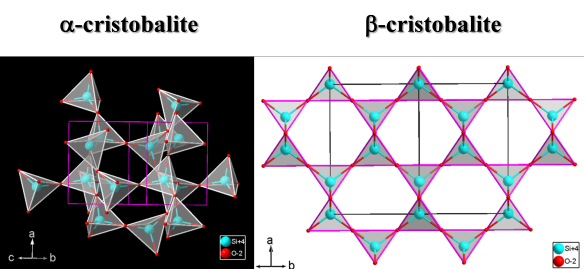Same … but different. The structure of β-cristobalite
What does it look like?

Crystallographic representation generated with Diamond.
What is it?
Basically, α-cristobalite is stable at temperature below 270°C. Then, above this temperature, the atoms re-arrange to give rise to β-cristobalite, the symmetry of the solid changing from tetragonal to cubic. And the silica family does not stop here; there are 11 crystalline polymorphs, plus 2 amorphous (non-crystalline) polymorphs. One of them is particularly interesting: Keatite, which does not exist in nature, a pure synthetic SiO2 polymorph.
You can learn more about SiO2 polymorphs at http://www.quartzpage.de/gen_mod.html.
Where did the structure come from?
The structure comes from a paper of Wyckoff, Ralph W. G. published in the German journal for Crystallography, Zeitschrift für Kristallographie, in 1925.






